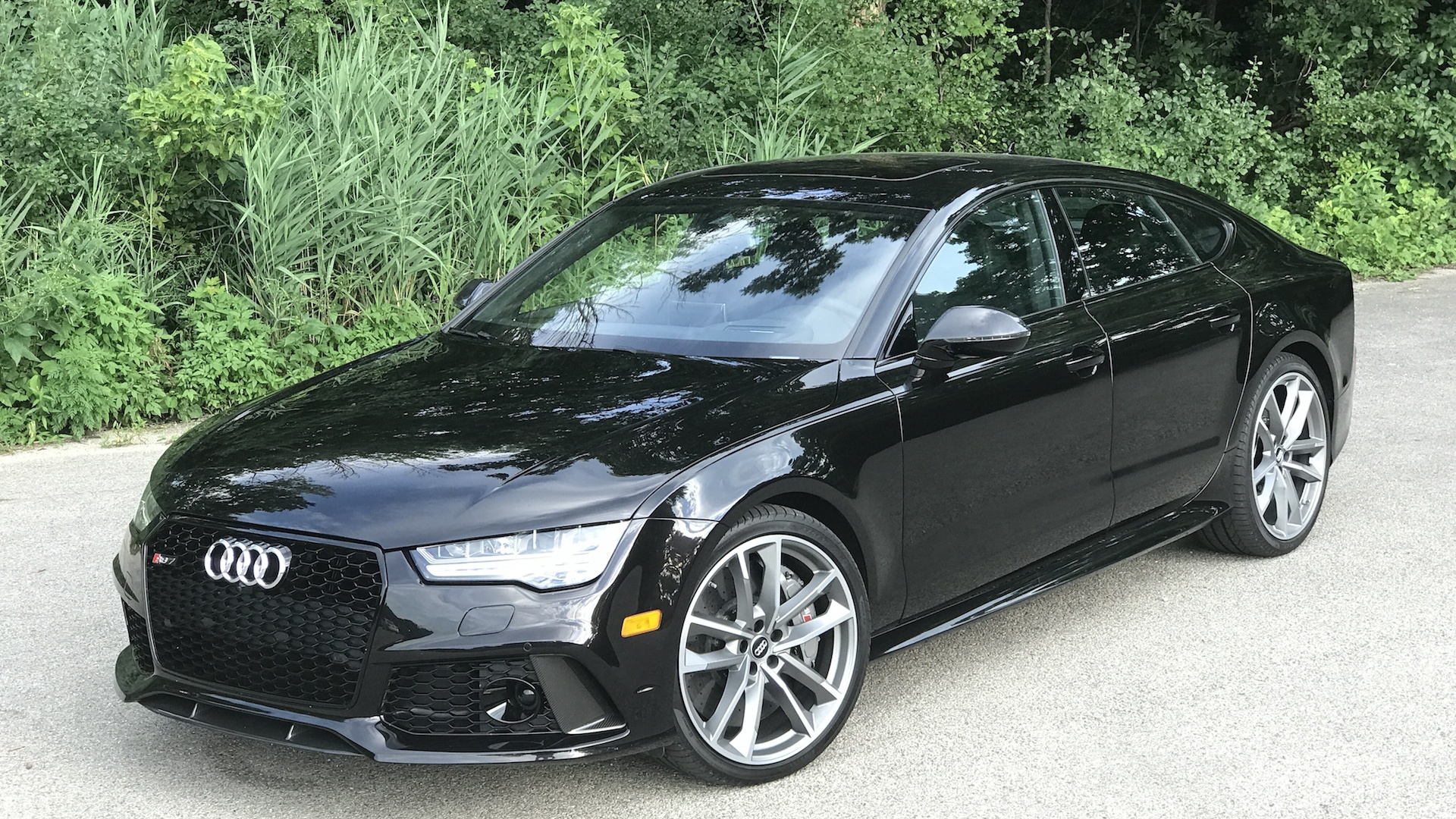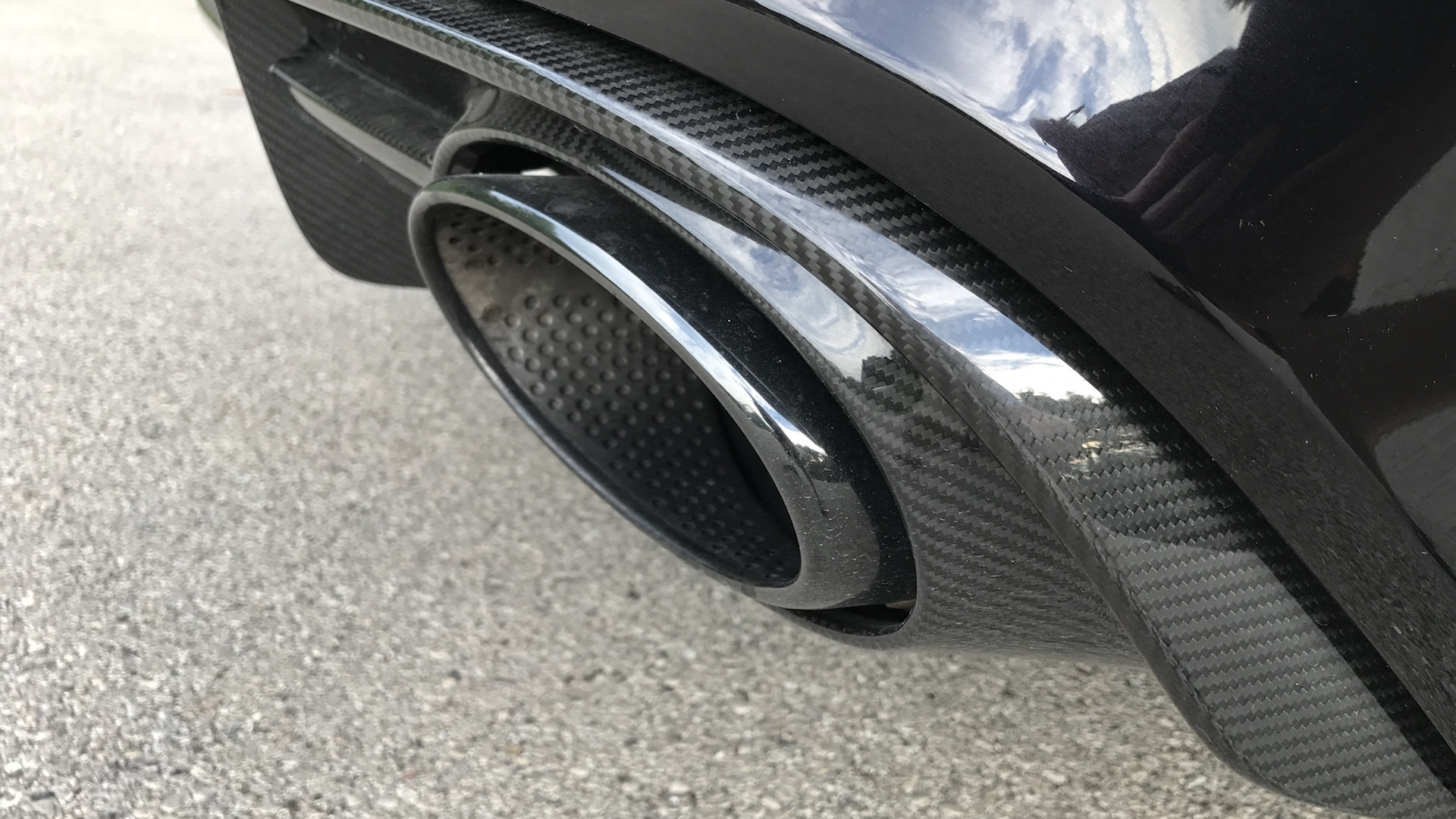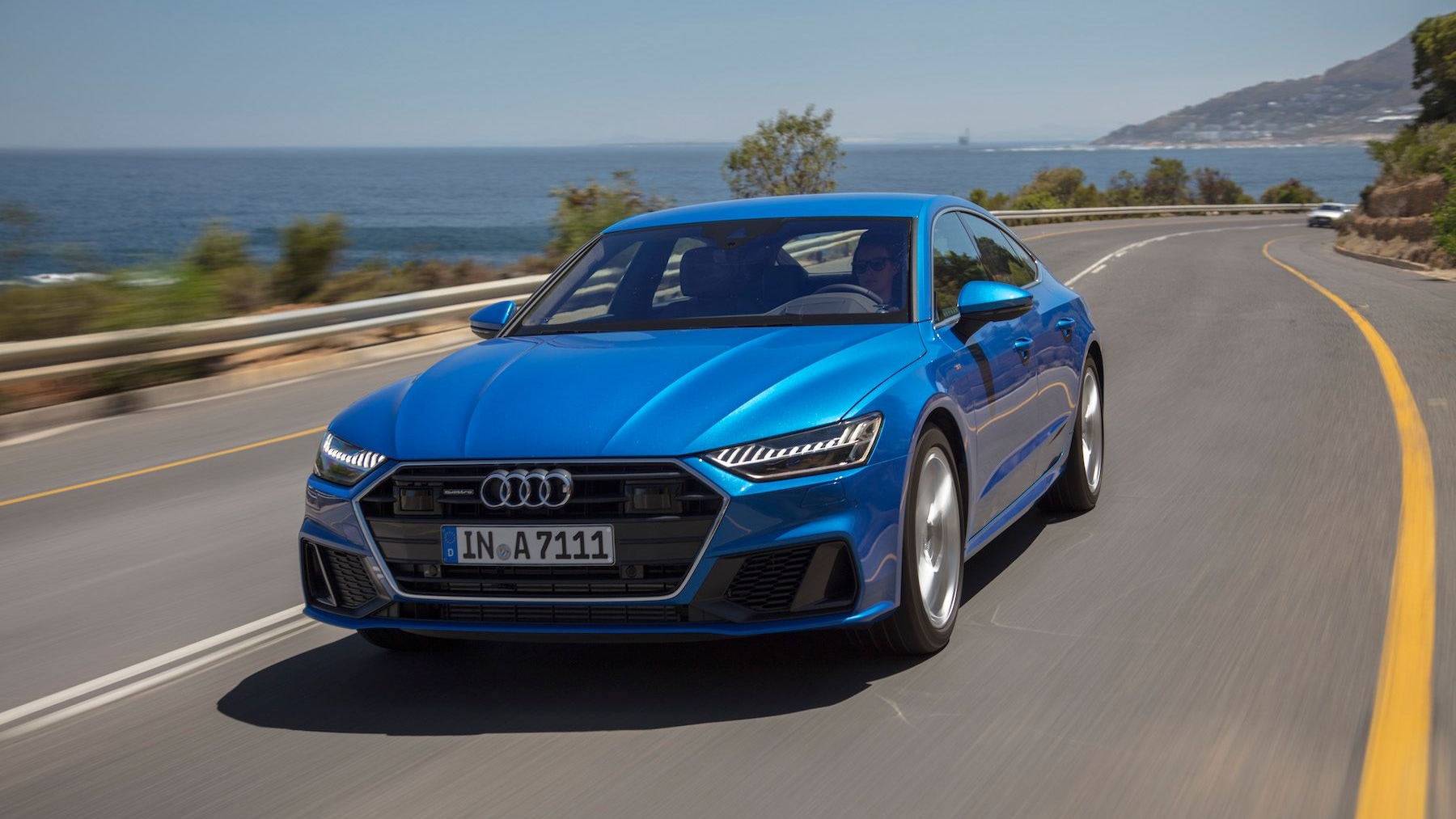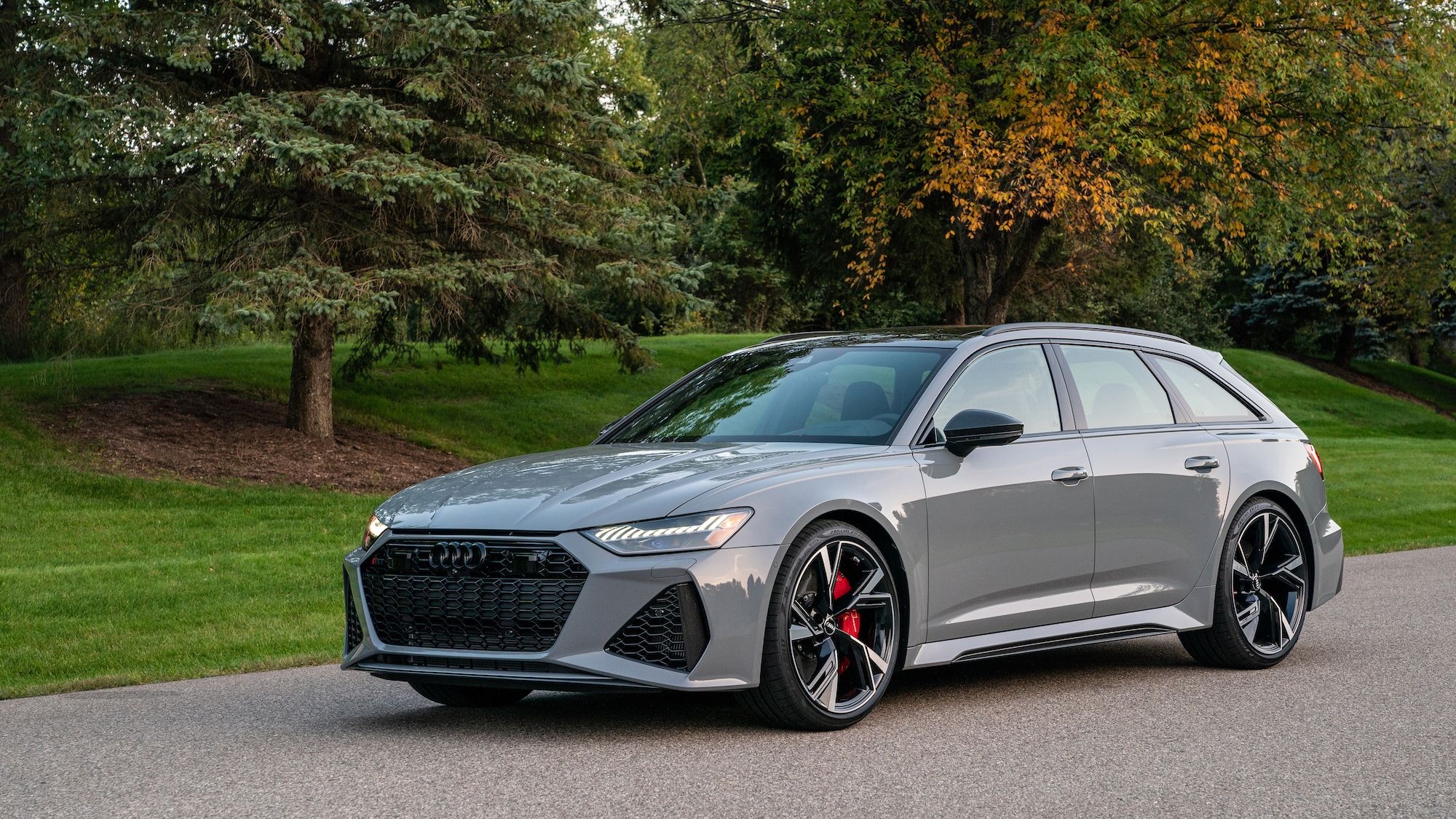Audi Sport's slogan is "Born on the track. Built for the road." While most of us would love to test the limits of any Audi Sport model on a racetrack, we'd also be happy to merely have the opportunity to slide behind the wheel of any RS model for a week, especially if it's a $137,000 RS 7 Performance. I had that chance recently, and I learned quite a bit about what it's like to live with a six-figure hatchback.
The power is intoxicating.
The twin-turbocharged 4.0-liter V-8 and 8-speed automatic combination is magic. To make a pass, simply think about it, rotate your right foot a few degrees, and the car makes mince meat of its prey. I'm not even sure it happens in that order. And that's with the engine and transmission in the base Comfort mode, which also delivers imperceptibly smooth shifts up through the gears.
CHECK OUT: 2016 Audi RS 7 Performance and S8 Plus first drive review
The V-8 puts out 605 horsepower and 516 pound-feet of torque, but Audi has an overboost mode that increases torque to 553 lb-ft when the transmission is in manual mode or you choose the Dynamic setting from the drive mode selector. Then, the RS 7 slays the 0-60 mph run in 3.6 seconds, aided by the hook from the Quattro all-wheel-drive system. However, Dynamic makes the transmission maintain low gears and the throttle touchy, creating a jumping driving experience in traffic. It's great for performance driving, but it's best to avoid on the street.
Fuel economy is acceptable.
The trade-off for all that power? Middling fuel economy, yet it won't break the bank, especially with today's reasonable prices. Over 381 miles with a pretty even mix of city and highway driving, I averaged 18.9 mpg. I can live with that.

2017 Audi RS 7

2017 Audi RS 7

2017 Audi RS 7

2017 Audi RS 7
The ride is remarkable.
Audi sets the RS 7 Performance on 21-inch wheels with 275/35 tires. It also has a Dynamic Ride Control suspension with steel springs and adaptive dampers that are linked diagonally (the base RS 7 gets an air suspension). When a force acts on an outside wheel, the opposite damper firms up to reduce body roll.
ALSO SEE: 2018 Audi RS 3 first drive review: less money, but no less fun
Surprisingly, this setup also rides fairly well, too, despite those big 21-inch wheels and those short 35-series sidewalls. Yes, sharp potholes can pound through, and the ride is somewhat firm, but it's amazing how forgiving it is given the serious hardware Audi employs. Again, the Comfort mode for the damper control helps. In fact, I'd recommend Comfort for most settings, other than, perhaps, the engine sound, in most everyday driving.
The price is mind-boggling.
The car I tested was the not so succinctly named 2017 RS 7 Performance 4.0T Quattro Tiptronic. It came with a base price of $129,500, and added Panther Black crystal effect paint ($1,075) that would make Darth Vader jealous; a black Alcantara headliner for a mere $3,000; the Driver Assistance package ($2,450) with adaptive cruise control, forward-collision warnings with automatic emergency braking, active lane assist, corner view cameras, and automatic high beams--really, this isn't included in the $130K base price? Add in the $950 destination charge and the total came to $136,975.
In addition to the engine and transmission, the RS 7 comes with carbon-ceramic brakes, a sport exhaust system, a sport differential, the Dynamic Ride Control suspension, sport-tuned steering, and the 21-inch wheels and tires.
That's all great stuff, but is it worth a nearly $50,000 premium over the S7's $81,200 base price? Unless you are truly going to track this car, I don't think so. It might have been born on the track, but it's going to spend the vast majority of its time on the street. Save yourself $50k, and go with the S7.









